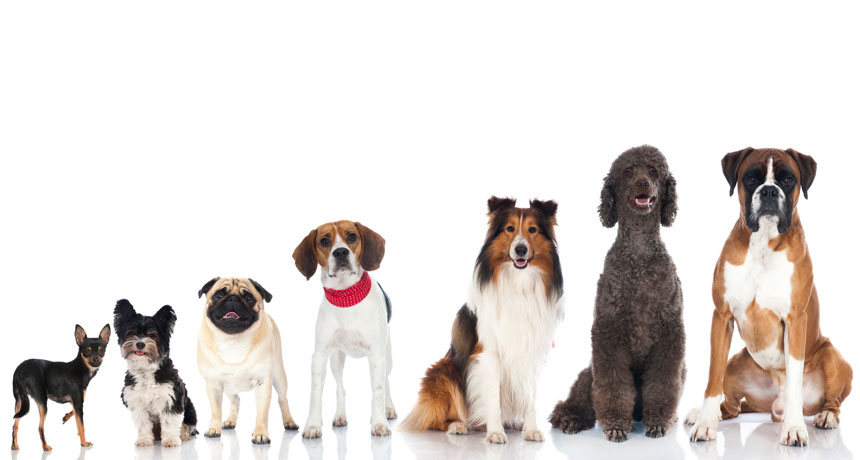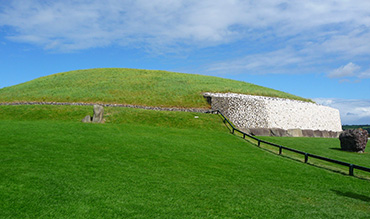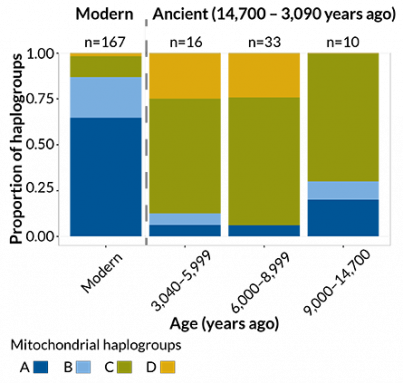The turning of wolves into dogs may have occurred twice
Domestication may have taken place in both the East and West, ancient DNA show

Modern dogs come in a variety of shapes and sizes. But they all have the same ancestor: the wolf. A new study shows that the process of turning wolves into dogs may have happened twice — in Europe and again in Asia.
Judith Dzierzawa/istockphoto
Dogs were such great friends that humans appear to have domesticated them at least twice, a new study suggests.
Domestication (Doh-MES-ti-KAY-shun) is the gradual process by which humans can produce a tame and useful animal from a wild one. This happens over countless generations. It may take thousands of years, but eventually the tamed animals can become so different from their wild ancestors that they turn into a new species. In this case of wolves, their domestication produced dogs.
Earlier studies had indicated that the wolf-to-dog transformation happened just once. But scientists disagree about where it occurred. Some say dogs became human’s best friend in East Asia. Then, last year, a study of village dogs suggested it had happened in Central Asia. Some studies had even hinted that Europeans were the first to turn wolves into dogs.

Understanding process to dog-dom may help people learn more about humans’ distant past. Dogs were probably the first domesticated animal. They may have paved the way for taming other animals and plants.
In the new study, researchers put together the complete set of genes, or genome, of an ancient dog. Genes are made of DNA and carry instructions for building a body and all the bits and pieces inside. So a genome is like an instruction book.
The ancient dog had been found in a tomb near Newgrange, Ireland. To get at the DNA carrying the dog’s genetic instruction book, researchers drilled into a bone from the dog’s inner ear. The bone, called the petrous, is part of a skull bone that makes that knob behind your ear.
That petrous is hard as a rock, says Laurent Frantz. He is an evolutionary geneticist at the University of Oxford in England. He was also one of the scientists that took part in the new study. The hard petrous bone protects the DNA inside. So when scientists examined it after thousands of years, it still was fairly easy to read.
But it didn’t tell the scientists much about what the midsize Irish dog that it came from would have looked like. From its DNA, the scientists can tell that it probably did not resemble modern dog breeds, Frantz says. “He wasn’t black. He wasn’t spotted. He wasn’t white.” Instead, the Newgrange dog was probably a mongrel with fur similar to a wolf’s.
But the ancient mutt has something special in his genes. It had a stretch of mysterious DNA, points out Mietje Germonpré. She is a paleontologist at the Royal Belgian Institute of Natural Sciences in Brussels and was not part of the study. “This Irish dog has a component that can’t be found in recent dogs or recent wolves.” That mystery DNA, she says, could be left over from prehistoric dogs that lived in Europe. And that just might help researchers learn more about what the first dogs were like. Or it could be a trace of an extinct ancient wolf that may have given rise to dogs.
Digging deep into doggy DNA
The idea that dogs came from East Asia or Central Asia is mostly based on the DNA of modern dogs. Claims that dogs have European origins had been staked on the DNA of prehistoric pups. “This paper combines both types of data” to give a more complete picture of dog domestication, says Germonpré.
Frantz’s team gathered DNA data from the Newgrange dog and other ancient dogs. The scientists compared these to data from studies of modern dogs. These included the whole genomes of 80 separate dogs. The researchers also used a less-complete sampling of DNA from 605 additional dogs. They included a collection of 48 breeds and of village dogs of no particular breed.
Eastern and Western dogs are genetically different, the researchers learned. That might indicate that two separate branches of the canine family tree once existed, like distant cousins.
The Newgrange dog’s DNA is more like that of the Western dogs. Since the Irish dog is 4,800 years old, the Eastern and Western dogs must have gone out on separate limbs of family tree before then. That probably happened between about 6,400 to 14,000 years ago. The new finding suggests that dogs may have been domesticated from local wolves in two separate locations during the Stone Age.
The ancient dog’s DNA also may help pinpoint when that domestication took place. Frantz and his colleagues used the Newgrange dog as a known point in time. Then they counted up the genetic changes that have happened to dogs since then. From there they could calculate how quickly dogs’ DNA changes, or mutates. This “mutation rate” is important for figuring out how long ago animals morphed into a new species. It also can tell researchers how fast animals can adapt to new situations.
Dogs’ genes mutate at a slower rate than researchers had calculated before, the study found.
Determining when dogs first emerged
Frantz’s team used this slower mutation rate to calculate when dogs likely became different from wolves.
That split likely occurred between 20,000 and 60,000 years ago. So that could be the time period when humans began domesticating wolves. But Frantz and colleagues say that their estimate doesn’t truly nail down when domestication happened. Different types of wolves could have been hanging around for a long time. Some became grey wolves like the ones living today. Others went extinct. And still others evolved into dogs. The researchers need more data to tell exactly when all of those things occurred.

Mitochrondrial DNA comes in different “flavors” called haplogroups. Researchers can use those different types to figure out where a dog’s mother, grandmother, great-grandmother and so on came from. The researchers compared mitochondrial DNA from 59 ancient European dogs and 167 modern European dogs. Haplogroups in the ancient European dogs were different from those in the modern dogs, the researchers found.
Still, the authors of the latest study admit they can’t yet rule out that dogs were domesticated only once. Dogs could have then moved to different places early on. There, isolation, random chance and other factors might have caused them to drift apart genetically so that now their DNA looks like they started as different groups.







